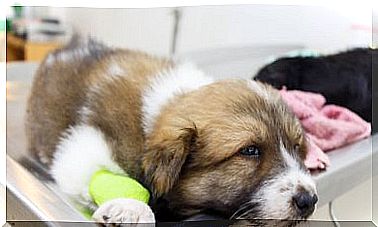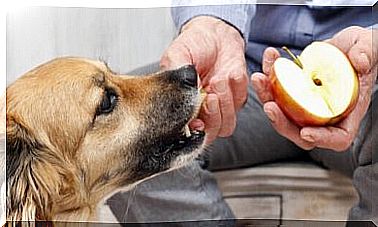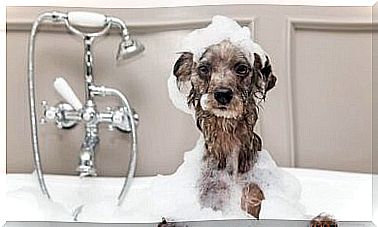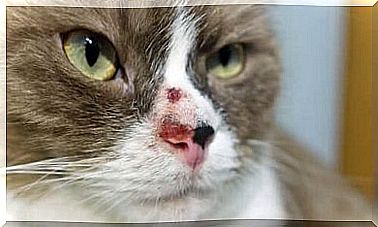How To Prevent Parasites In Guinea Pigs?

These lovely pets make good pets for a child because they are docile, clean and easy to hold. Still, you need to be aware of the signs they show when they suffer from any of the typical guinea pig parasites.
There are a number of common diseases in guinea pigs. As with everything, being properly informed is the key to combat small and big difficulties.
In this article, you’ll see which parasites are most commonly found in guinea pigs. That way you will be better prepared to identify symptoms.
How a healthy guinea pig acts
Your guinea pig should have a shiny coat, clear and bright eyes. Your pet’s teeth should be yellow, and the mouth and nose will have no secretions.
A happy guinea pig will be active and playful: listlessness, lameness, or matted fur may be signs that you should take the animal to the vet.
Minimal care to detect and prevent parasites in guinea pigs
constant observation
It’s a good idea to get used to checking your guinea pig at least once a day. After all, this will allow you to detect any problems and apply timely treatment.
Any weight loss, or loss of appetite, can be a sign that your guinea pig is bored, unhappy and, at worst, sick.
You should also check for any stickiness in the perianal area, which could indicate diarrhea or infection. Any change in this region is a clear sign that you need to see a veterinarian.
Quarantine
If you have purchased a second guinea pig, it is a good idea to quarantine it in a separate cage for a few weeks. Quarantine, before placing your new pet with the others, will give you time to observe it. Thus, it will be possible to detect signs of external parasites and prevent them from spreading to other animals.

bed and food
Guinea pigs can spread parasites among themselves and can also contract them through contact with food and bedding.
Before putting food or a bed in the cage, make it a habit to freeze these items for a day. Extremely cold temperatures will kill any potential parasites that may be lurking in these items.
Common parasites in guinea pigs
It is quite possible that your guinea pig will contract external parasites. These can be fleas, lice and ringworm, especially if there are other animals in your home, such as dogs and cats.
Symptoms of these parasites include constant itching, excessive dandruff and hair loss failures. The animal’s discomfort can cause it to run in circles.
If left untreated, external parasites can cause self-mutilation, weakening and infection by scratching the skin. Animals can die if not properly treated and if the infection progresses to affect the entire skin of the body.
Mites
Mite infestations are among the most serious cases of external parasites in guinea pigs. Mites cause scabies, an infectious disease that causes severe itching and alopecia. These parasites burrow into the skin and form scabs, especially near the ears.
Almost all cases of mange in guinea pigs are caused by Trixacarus caviae. They are so small that they can only be seen on a microscopic examination of a guinea pig’s skin scraping.

Lice
Lice are small, white, flat insects that live in the fur of guinea pigs. Lice and their eggs can be seen with the naked eye in the bald areas behind the guinea pig’s ears. The most commonly reported species in guinea pigs is Gliricola porcelli.
Their presence can go unnoticed, as they usually appear in small amounts. Adult lice and their eggs adhere to the hair follicles.
Serious infestations are rare, but these circumstances can lead to severe itching, alopecia and traumatic injuries, especially behind the ears.
Ringworm or fungal infection
Ringworm is an infection of the skin and nails that is transmitted by contact between sick animals or by infestation through contaminated environments.
The most reported causative agent for guinea pigs is Trichophyton mentagrophytes . The infection breaks the hair a short distance from the follicle. Thus, gray and sensitive regions appear on the skin, with hair residues that leave a bad appearance on the animal.
Treatment against parasites in guinea pigs
If you suspect an infestation, disinfect the cage and equipment and talk to your veterinarian for treatment advice. Treatment should take a few weeks.
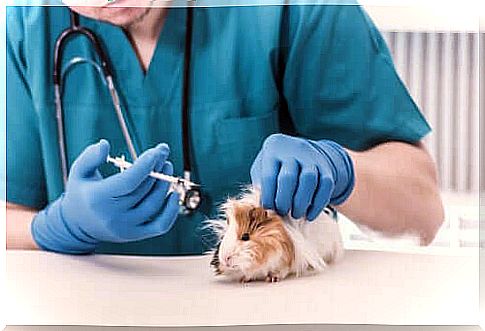
Your vet can tell if your guinea pig has mites or lice. It is important to disinfect the guinea pig habitat.
First, you must remove and discard the bed. Then, spray a solution of chlorine diluted in water at a concentration of 10% throughout the cage. You should continue cleaning your cage in the same way on a weekly basis.

